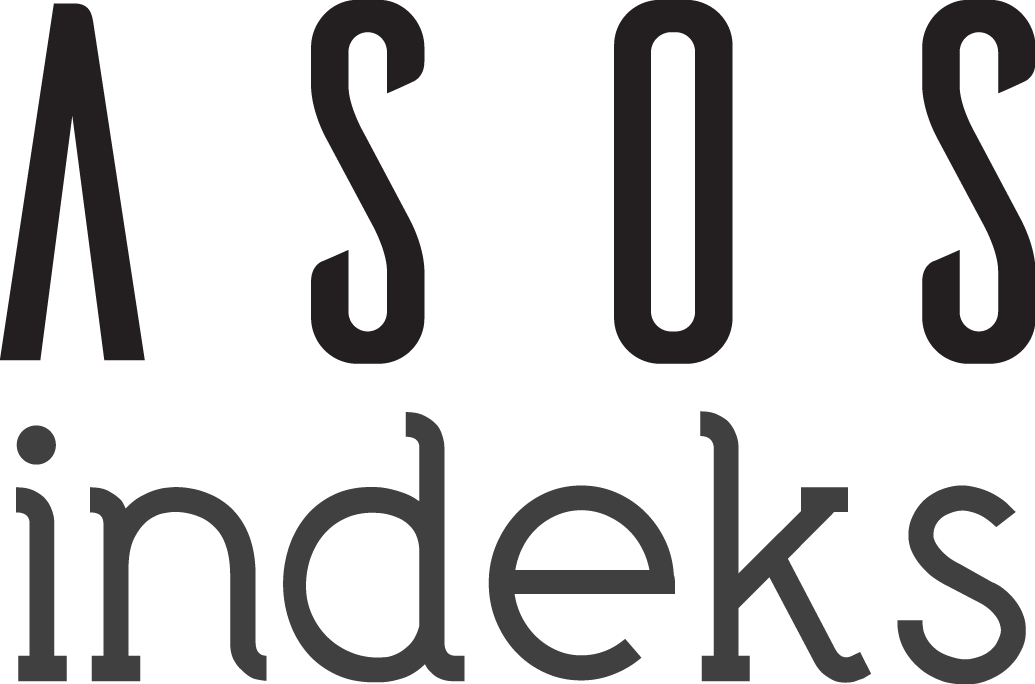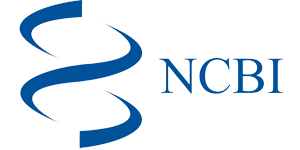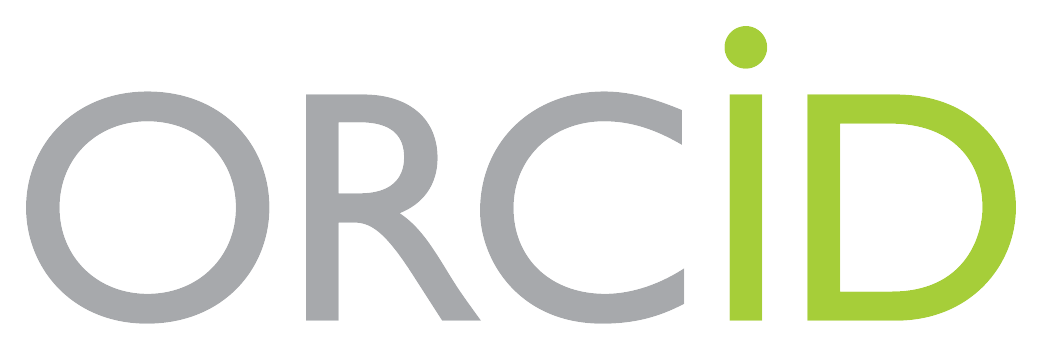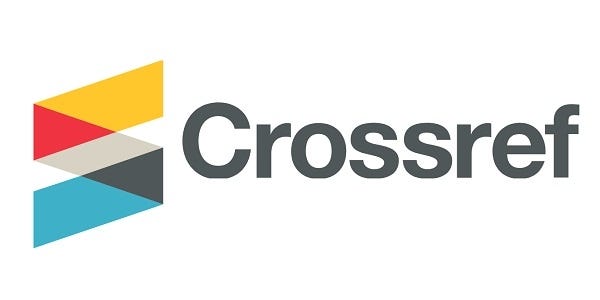Nükleer tıpta kullanılan radyonüklidlerin organ dozu ve etkin doz üzerindeki etkilerinin araştırılması
Abstract
Amaç: Bu çalışmanın amacı, 68Ga, 18F, 89Sr, 13N, 133Xe ve 131I radyonüklit kaynaklarının farklı mesafelerde organ dozları ve efektif dozlar üzerindeki etkilerini araştırmaktır.
Yöntem: Bu çalışmada, nükleer tıp uygulamalarında yaygın olarak kullanılan radyonüklidler, değişen mesafelerde organ dozlarını ve efektif doz değerlerini belirlemek için VMC doz hesaplama yazılımında tanımlanmıştır. Ek olarak, her bir radyonüklidin doz hızları Rad Pro Calculator çevrimiçi programı kullanılarak elde edilmiştir.
Bulgular: 10 mCi dozda farklı radyonüklidler için, değişen mesafelerde ortalama doz hızı ölçümleri yapılmıştır. Özellikle, 13N ve 89Sr belirli organlara en yüksek dozları verirken, 133Xe ve 131I daha düşük dozlara neden olmuştur. Mesafe arttıkça, radyasyon maruziyeti seviyeleri azalmıştır.
Sonuç: Bu çalışma, nükleer tıp profesyonelleri ve hastaları için ALARA (Makul Ölçüde Erişilebilir En Düşük) prensibinin önemini vurgulamaktadır. Bulgular, klinik uygulamalarda radyasyon dozlarını en aza indirmek için daha etkili radyasyondan korunma önlemlerinin geliştirilmesine katkıda bulunabilir. Ayrıca, radyasyon kaynağından yakın mesafeden kaçınmak ve uygun kalkanlama yöntemlerini kullanmak, radyasyon maruziyetini en aza indirmede kritik öneme sahiptir.
Keywords
References
- Villoing D, Drozdovitch V, Simon SL, Kitahara CM, Linet MS, Melo DR. Estimated organ doses to patients from diagnostic nuclear medicine examinations over five decades: 1960-2010. Health Phys. 2017;113(6): 474-518. doi:10.1097/HP.0000000000000721
- Şahmaran T. Evaluation of occupational radiation dose due to 99mTc and 131I based examinations. J Health Sci Med. 2024;7(2):168-173. doi:10. 32322/jhsm.1418974
- Salvatori M, Rizzo A, Rovera G, Indovina L, Schillaci O. Radiation dose in nuclear medicine: the hybrid imaging. Radiol Med. 2019;124(8):768-776. doi:10.1007/s11547-019-00989-y
- Wibmer AG, Hricak H, Ulaner GA, Weber W. Trends in oncologic hybrid imaging. Eur J Hybrid Imaging. 2018;2(1):1. doi:10.1186/s41824-017-0019-6
- Ali M, Alameen S, Bashir A, et al. Estimate of effective dose for adult patients from nuclear medicine examinations in Sudan. Radiat Physics Chemistry. 2022;200:110330. doi:10.1016/j.radphyschem.2022.110330
- Teksöz S, Müftüler FZ. Nükleer tıpta kullanılan radyoizotoplar ve biyomedikal uygulamaları. Nuclear Med Seminar. 2019;5:10-14. doi:10. 4274/nts.galenos.2019.0002
- Demir M. Nükleer tıp fiziği ve klinik uygulamaları. İÜC Üniversite Yayınevi. 2020;80:112-126.
- Behrendt CA, Rieß HC, Heidemann F, et al. Radiation dosage for percutaneous PAD treatment is different in cardiovascular disciplines: results from an eleven-year population-based registry in the metropolitan area of Hamburg. Eur J Vasc Endovasc Surg. 2017;53(2):215-222. doi:10.1016/j.ejvs.2016.11.001
- Lee C. A review of organ dose calculation methods and tools for patients undergoing diagnostic nuclear medicine procedures. J Radiat Protect Res. 2024;49(1):1-8. doi:10.14407/jrpr.2023.00087
- Işıkcı Nİ, Demir M, Sönmezoğlu K. Evaluation of annual occupational doses of technologists in diagnostic nuclear medicine. Cerrahpaşa Med J. 2022;46(3):226-229. doi:10.5152/cjm.2022.22007
- Ho WY, Wong KK, Leung YL, Cheng KC, Ho FT. Radiation doses to staff in a nuclear medicine department. J Hong Kong College Radiol. 2002;5:24-28.
- Chiesa C, De Sanctis V, Crippa F, et al. Radiation dose to technicians per nuclear medicine procedure: comparison between technetium-99m, gallium-67, and iodine-131 radiotracers and fluorine-18 fluorodeoxyglucose. Eur J Nucl Med. 1997;24(11):1380-1389. doi:10.1007/s 002590050164
- Demirci S, Sezer S, Vural GU, Yüksel M, Gökbulut V. Incidental focal 18F-FDG uptake in colorectal locations on PET/CT for oncologic reasons: pathologic correlation with endoscopic findings. J Health Sci Med. 2024;8(1):109-114. doi:10.32322/jhsm.1594127
- Peet DJ, Morton R, Hussein M, Alsafi K, Spyrou N. Radiation protection in fixed PET/CT facilities-design and operation. Br J Radiol. 2012; 85(1013):643-646. doi:10.1259/bjr/32969351
- Demir M, Demir B, Yaşar D, et al. Radiation doses to technologists working with 18F-FDG in a PET center with high patient capacity. Nukleonika. 2010;55:107-112.
- Fathy M, Khalil MM, Elshemey WM, Mohamed HS. Occupational radiation dose to nuclear medicine staff due to Tc99m, F18-FDG PET and therapeutic I-131 based examinations. Radiat Prot Dosimetry. 2019; 186(4):443-451. doi:10.1093/rpd/ncz046
- Şahmaran T, Çoraplı H. Exploring occupational radiation exposure: insights from a decade-long study (2012-2021). J Radiat Res Appl Sci. 2024;17(1):100830. doi:10.1016/j.jrras.2024.100830
- Gültekin SS, Sahmaran T. Importance of bladder radioactivity for radiation safety in nuclear medicine. Mol Imaging Radionucl Ther. 2013; 22(3):94-97. doi:10.4274/Mirt.18480
- Papadimitroulas P, Loudos G, Nikiforidis GC, Kagadis GC. A dose point kernel database using GATE Monte Carlo simulation toolkit for nuclear medicine applications: comparison with other Monte Carlo codes. Med Phys. 2012;39(8):5238-5247. doi:10.1118/1.4737096
- Zhang S, Wang X, Gao X, et al. Radiopharmaceuticals and their applications in medicine. Signal Transduct Target Ther. 2025;10(1):1. doi: 10.1038/s41392-024-02041-6
- International Commission on Radiological Protection, Recommendations of the International Commission on Radiological Protection, ICRP Publication 26 ~The International Commission on Radiological Protection, Oxford, 1977.
- International Commission on Radiological Protection, 1990 Recommendations of the International Commission on Radiological Protection, ICRP Publication 60 ~The International Commission on Radiological Protection, New York, NY, 1991.
- Yoder RC, Dauer LT, Balter S, et al. Dosimetry for the study of medical radiation workers with a focus on the mean absorbed dose to the lung, brain and other organs. Int J Radiat Biol. 2022;98(4):619-630. doi:10.1080/09553002.2018.1549756
- Chauvin M, Borys D, Botta F, et al. OpenDose: open-access resource for nuclear medicine dosimetry. J Nucl Med. 2020;61(10):1514-1519. doi:10. 2967/jnumed.119.240366
- Alameen S, Tamam N, Awadain S, Sulieman A, Alkhaldi L, Hmed AB. Radiobiological risks in terms of effective dose and organ dose from 18F-FDG whole-body PET/CT procedures. Saudi J Biol Sci. 2021;28(10): 5947-5951. doi:10.1016/j.sjbs.2021.06.055
Investigation of the effects of radionuclides used in nuclear medicine on organ dose and effective dose
Abstract
Aims: The aim of this study is to investigate the effects of 68Ga, 18F, 89Sr, 13N, 133Xe and 131I radionuclide sources on organ doses and effective doses at different distances.
Methods: In this study, radionuclides commonly used in nuclear medicine applications were defined in the VMC dose calculation software to determine organ doses and effective dose values at varying distances. Additionally, the dose rates of each radionuclide were obtained using the Rad pro calculator online program.
Results: For different radionuclides at a 10 mCi dose, average dose rate measurements were conducted at varying distances. Specifically, 13N and 89Sr delivered the highest doses to certain organs, whereas 133Xe ve 131I resulted in lower doses. The effective doses at 100 cm for 68Ga, 18F, 89Sr, 13N, 133Xe and 131I sources were determined to be 2.72 µSv, 2.94 µSv, 2.50 µSv, 2.84 µSv, 0.91 µSv, and 1.16 µSv, respectively. The effective doses at 150 cm for 68Ga, 18F, 89Sr, 13N, 133Xe and 131I sources were determined to be 1.56 µSv, 1.49 µSv, 1.30 µSv, 1.46 µSv, 0.14 µSv, and 0.58 µSv, respectively. As the distance increased, radiation exposure levels decreased.
Conclusion: In this study, radiation exposure decreased significantly with distance from the source, demonstrating the importance of maintaining distance and applying ALARA principles in clinical settings. Furthermore, avoiding close proximity to the radiation source and utilizing appropriate shielding methods are crucial in minimizing radiation exposure.
References
- Villoing D, Drozdovitch V, Simon SL, Kitahara CM, Linet MS, Melo DR. Estimated organ doses to patients from diagnostic nuclear medicine examinations over five decades: 1960-2010. Health Phys. 2017;113(6): 474-518. doi:10.1097/HP.0000000000000721
- Şahmaran T. Evaluation of occupational radiation dose due to 99mTc and 131I based examinations. J Health Sci Med. 2024;7(2):168-173. doi:10. 32322/jhsm.1418974
- Salvatori M, Rizzo A, Rovera G, Indovina L, Schillaci O. Radiation dose in nuclear medicine: the hybrid imaging. Radiol Med. 2019;124(8):768-776. doi:10.1007/s11547-019-00989-y
- Wibmer AG, Hricak H, Ulaner GA, Weber W. Trends in oncologic hybrid imaging. Eur J Hybrid Imaging. 2018;2(1):1. doi:10.1186/s41824-017-0019-6
- Ali M, Alameen S, Bashir A, et al. Estimate of effective dose for adult patients from nuclear medicine examinations in Sudan. Radiat Physics Chemistry. 2022;200:110330. doi:10.1016/j.radphyschem.2022.110330
- Teksöz S, Müftüler FZ. Nükleer tıpta kullanılan radyoizotoplar ve biyomedikal uygulamaları. Nuclear Med Seminar. 2019;5:10-14. doi:10. 4274/nts.galenos.2019.0002
- Demir M. Nükleer tıp fiziği ve klinik uygulamaları. İÜC Üniversite Yayınevi. 2020;80:112-126.
- Behrendt CA, Rieß HC, Heidemann F, et al. Radiation dosage for percutaneous PAD treatment is different in cardiovascular disciplines: results from an eleven-year population-based registry in the metropolitan area of Hamburg. Eur J Vasc Endovasc Surg. 2017;53(2):215-222. doi:10.1016/j.ejvs.2016.11.001
- Lee C. A review of organ dose calculation methods and tools for patients undergoing diagnostic nuclear medicine procedures. J Radiat Protect Res. 2024;49(1):1-8. doi:10.14407/jrpr.2023.00087
- Işıkcı Nİ, Demir M, Sönmezoğlu K. Evaluation of annual occupational doses of technologists in diagnostic nuclear medicine. Cerrahpaşa Med J. 2022;46(3):226-229. doi:10.5152/cjm.2022.22007
- Ho WY, Wong KK, Leung YL, Cheng KC, Ho FT. Radiation doses to staff in a nuclear medicine department. J Hong Kong College Radiol. 2002;5:24-28.
- Chiesa C, De Sanctis V, Crippa F, et al. Radiation dose to technicians per nuclear medicine procedure: comparison between technetium-99m, gallium-67, and iodine-131 radiotracers and fluorine-18 fluorodeoxyglucose. Eur J Nucl Med. 1997;24(11):1380-1389. doi:10.1007/s 002590050164
- Demirci S, Sezer S, Vural GU, Yüksel M, Gökbulut V. Incidental focal 18F-FDG uptake in colorectal locations on PET/CT for oncologic reasons: pathologic correlation with endoscopic findings. J Health Sci Med. 2024;8(1):109-114. doi:10.32322/jhsm.1594127
- Peet DJ, Morton R, Hussein M, Alsafi K, Spyrou N. Radiation protection in fixed PET/CT facilities-design and operation. Br J Radiol. 2012; 85(1013):643-646. doi:10.1259/bjr/32969351
- Demir M, Demir B, Yaşar D, et al. Radiation doses to technologists working with 18F-FDG in a PET center with high patient capacity. Nukleonika. 2010;55:107-112.
- Fathy M, Khalil MM, Elshemey WM, Mohamed HS. Occupational radiation dose to nuclear medicine staff due to Tc99m, F18-FDG PET and therapeutic I-131 based examinations. Radiat Prot Dosimetry. 2019; 186(4):443-451. doi:10.1093/rpd/ncz046
- Şahmaran T, Çoraplı H. Exploring occupational radiation exposure: insights from a decade-long study (2012-2021). J Radiat Res Appl Sci. 2024;17(1):100830. doi:10.1016/j.jrras.2024.100830
- Gültekin SS, Sahmaran T. Importance of bladder radioactivity for radiation safety in nuclear medicine. Mol Imaging Radionucl Ther. 2013; 22(3):94-97. doi:10.4274/Mirt.18480
- Papadimitroulas P, Loudos G, Nikiforidis GC, Kagadis GC. A dose point kernel database using GATE Monte Carlo simulation toolkit for nuclear medicine applications: comparison with other Monte Carlo codes. Med Phys. 2012;39(8):5238-5247. doi:10.1118/1.4737096
- Zhang S, Wang X, Gao X, et al. Radiopharmaceuticals and their applications in medicine. Signal Transduct Target Ther. 2025;10(1):1. doi: 10.1038/s41392-024-02041-6
- International Commission on Radiological Protection, Recommendations of the International Commission on Radiological Protection, ICRP Publication 26 ~The International Commission on Radiological Protection, Oxford, 1977.
- International Commission on Radiological Protection, 1990 Recommendations of the International Commission on Radiological Protection, ICRP Publication 60 ~The International Commission on Radiological Protection, New York, NY, 1991.
- Yoder RC, Dauer LT, Balter S, et al. Dosimetry for the study of medical radiation workers with a focus on the mean absorbed dose to the lung, brain and other organs. Int J Radiat Biol. 2022;98(4):619-630. doi:10.1080/09553002.2018.1549756
- Chauvin M, Borys D, Botta F, et al. OpenDose: open-access resource for nuclear medicine dosimetry. J Nucl Med. 2020;61(10):1514-1519. doi:10. 2967/jnumed.119.240366
- Alameen S, Tamam N, Awadain S, Sulieman A, Alkhaldi L, Hmed AB. Radiobiological risks in terms of effective dose and organ dose from 18F-FDG whole-body PET/CT procedures. Saudi J Biol Sci. 2021;28(10): 5947-5951. doi:10.1016/j.sjbs.2021.06.055
Details
| Primary Language | English |
|---|---|
| Subjects | Nuclear Medicine |
| Journal Section | Original Article |
| Authors | |
| Publication Date | May 30, 2025 |
| Submission Date | March 15, 2025 |
| Acceptance Date | April 6, 2025 |
| Published in Issue | Year 2025 Volume: 8 Issue: 3 |
Interuniversity Board (UAK) Equivalency: Article published in Ulakbim TR Index journal [10 POINTS], and Article published in other (excuding 1a, b, c) international indexed journal (1d) [5 POINTS].
The Directories (indexes) and Platforms we are included in are at the bottom of the page.
Note: Our journal is not WOS indexed and therefore is not classified as Q.
You can download Council of Higher Education (CoHG) [Yüksek Öğretim Kurumu (YÖK)] Criteria) decisions about predatory/questionable journals and the author's clarification text and journal charge policy from your browser. https://dergipark.org.tr/tr/journal/2316/file/4905/show
The indexes of the journal are ULAKBİM TR Dizin, Index Copernicus, ICI World of Journals, DOAJ, Directory of Research Journals Indexing (DRJI), General Impact Factor, ASOS Index, WorldCat (OCLC), MIAR, EuroPub, OpenAIRE, Türkiye Citation Index, Türk Medline Index, InfoBase Index, Scilit, etc.
The platforms of the journal are Google Scholar, CrossRef (DOI), ResearchBib, Open Access, COPE, ICMJE, NCBI, ORCID, Creative Commons, etc.
| ||
|
Our Journal using the DergiPark system indexed are;
Ulakbim TR Dizin, Index Copernicus, ICI World of Journals, Directory of Research Journals Indexing (DRJI), General Impact Factor, ASOS Index, OpenAIRE, MIAR, EuroPub, WorldCat (OCLC), DOAJ, Türkiye Citation Index, Türk Medline Index, InfoBase Index
Our Journal using the DergiPark system platforms are;
Journal articles are evaluated as "Double-Blind Peer Review".
Our journal has adopted the Open Access Policy and articles in JHSM are Open Access and fully comply with Open Access instructions. All articles in the system can be accessed and read without a journal user. https//dergipark.org.tr/tr/pub/jhsm/page/9535
Journal charge policy https://dergipark.org.tr/tr/pub/jhsm/page/10912
Our journal has been indexed in DOAJ as of May 18, 2020.
Our journal has been indexed in TR-Dizin as of March 12, 2021.
Articles published in the Journal of Health Sciences and Medicine have open access and are licensed under the Creative Commons CC BY-NC-ND 4.0 International License.














